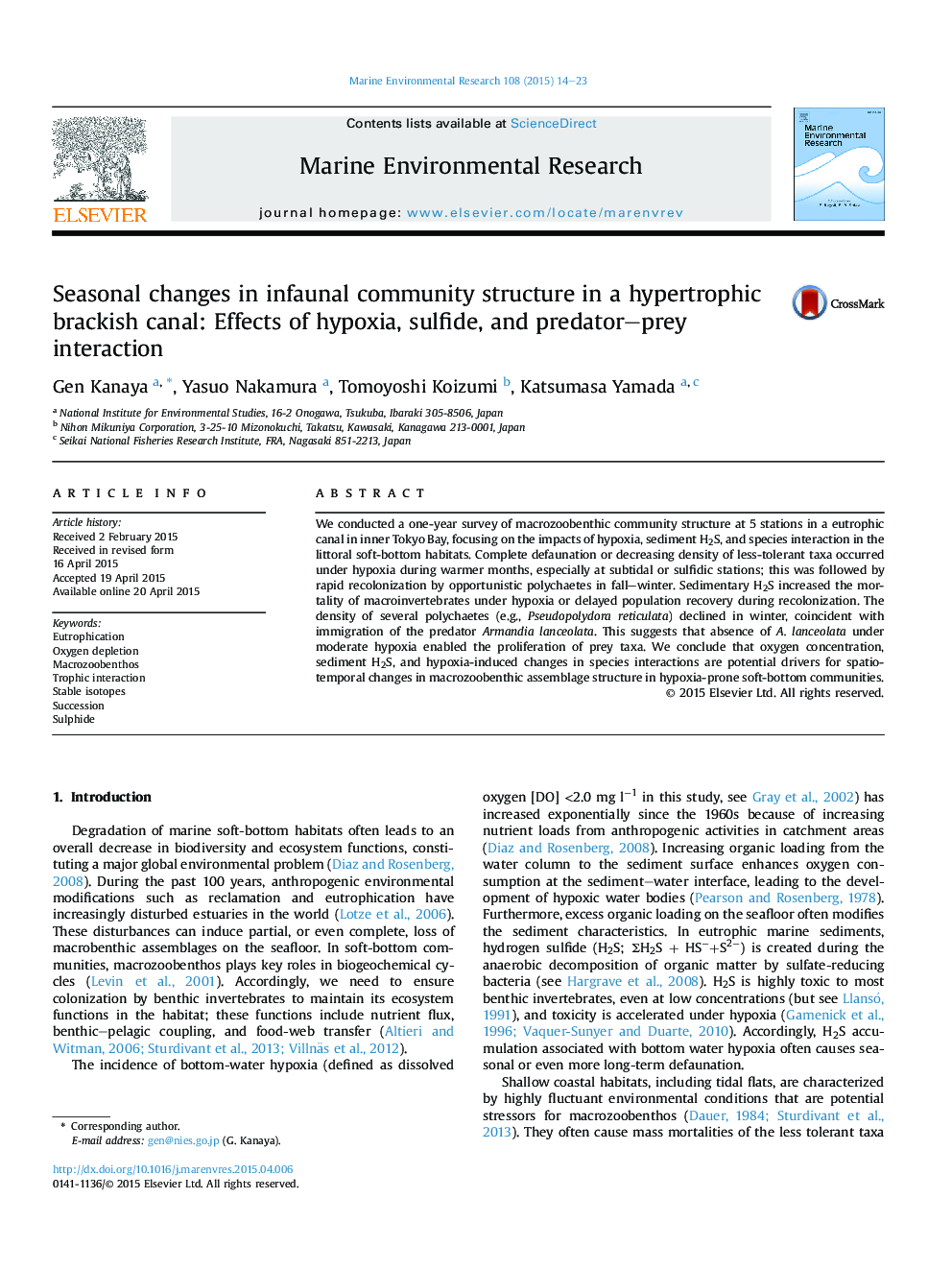| Article ID | Journal | Published Year | Pages | File Type |
|---|---|---|---|---|
| 6387753 | Marine Environmental Research | 2015 | 10 Pages |
Abstract
We conducted a one-year survey of macrozoobenthic community structure at 5 stations in a eutrophic canal in inner Tokyo Bay, focusing on the impacts of hypoxia, sediment H2S, and species interaction in the littoral soft-bottom habitats. Complete defaunation or decreasing density of less-tolerant taxa occurred under hypoxia during warmer months, especially at subtidal or sulfidic stations; this was followed by rapid recolonization by opportunistic polychaetes in fall-winter. Sedimentary H2S increased the mortality of macroinvertebrates under hypoxia or delayed population recovery during recolonization. The density of several polychaetes (e.g., Pseudopolydora reticulata) declined in winter, coincident with immigration of the predator Armandia lanceolata. This suggests that absence of A. lanceolata under moderate hypoxia enabled the proliferation of prey taxa. We conclude that oxygen concentration, sediment H2S, and hypoxia-induced changes in species interactions are potential drivers for spatiotemporal changes in macrozoobenthic assemblage structure in hypoxia-prone soft-bottom communities.
Keywords
Related Topics
Physical Sciences and Engineering
Earth and Planetary Sciences
Oceanography
Authors
Gen Kanaya, Yasuo Nakamura, Tomoyoshi Koizumi, Katsumasa Yamada,
